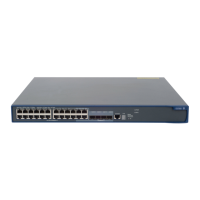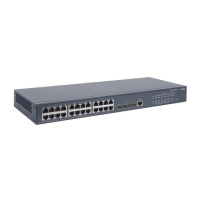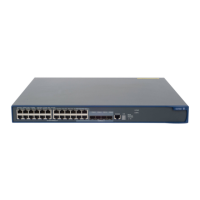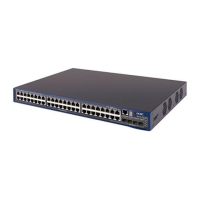31
To do… Use the command… Remarks
Display information about buffered
stop-accounting requests that get no
responses
display stop-accounting-buffer
{ radius-scheme radius-scheme-name |
session-id session-id | time-range
start-time stop-time | user-name
user-name } [ slot slot-number ] [ |
{ begin | exclude | include }
regular-expression ]
Available in any view
Clear RADIUS statistics reset radius statistics [ slot slot-number ]
Available in user view
Clear buffered stop-accounting
requests that get no responses
reset stop-accounting-buffer
{ radius-scheme radius-scheme-name |
session-id session-id | time-range
start-time stop-time | user-name
user-name } [ slot slot-number ]
Available in user view
Configuring HWTACACS schemes
NOTE:
You cannot remove the HWTACACS schemes in use or change the IP addresses of the HWTACACS
servers in use.
HWTACACS configuration task list
Task Remarks
Creating an HWTACACS scheme Required
Specifying the HWTACACS authentication servers Required
Specifying the HWTACACS authorization servers Optional
Specifying the HWTACACS accounting servers Optional
Setting the shared keys for HWTACACS packets Required
Setting the username format and traffic statistics units Optional
Specifying a source IP address for outgoing HWTACACS packets Optional
Setting timers for controlling communication with HWTACACS servers Optional
Displaying and maintaining HWTACACS Optional
Creating an HWTACACS scheme
The HWTACACS protocol is configured on a per scheme basis. Before performing other HWTACACS
configurations, follow these steps to create an HWTACACS scheme and enter HWTACACS scheme
view:
To do… Use the command… Remarks
Enter system view system-view —
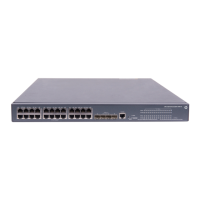
